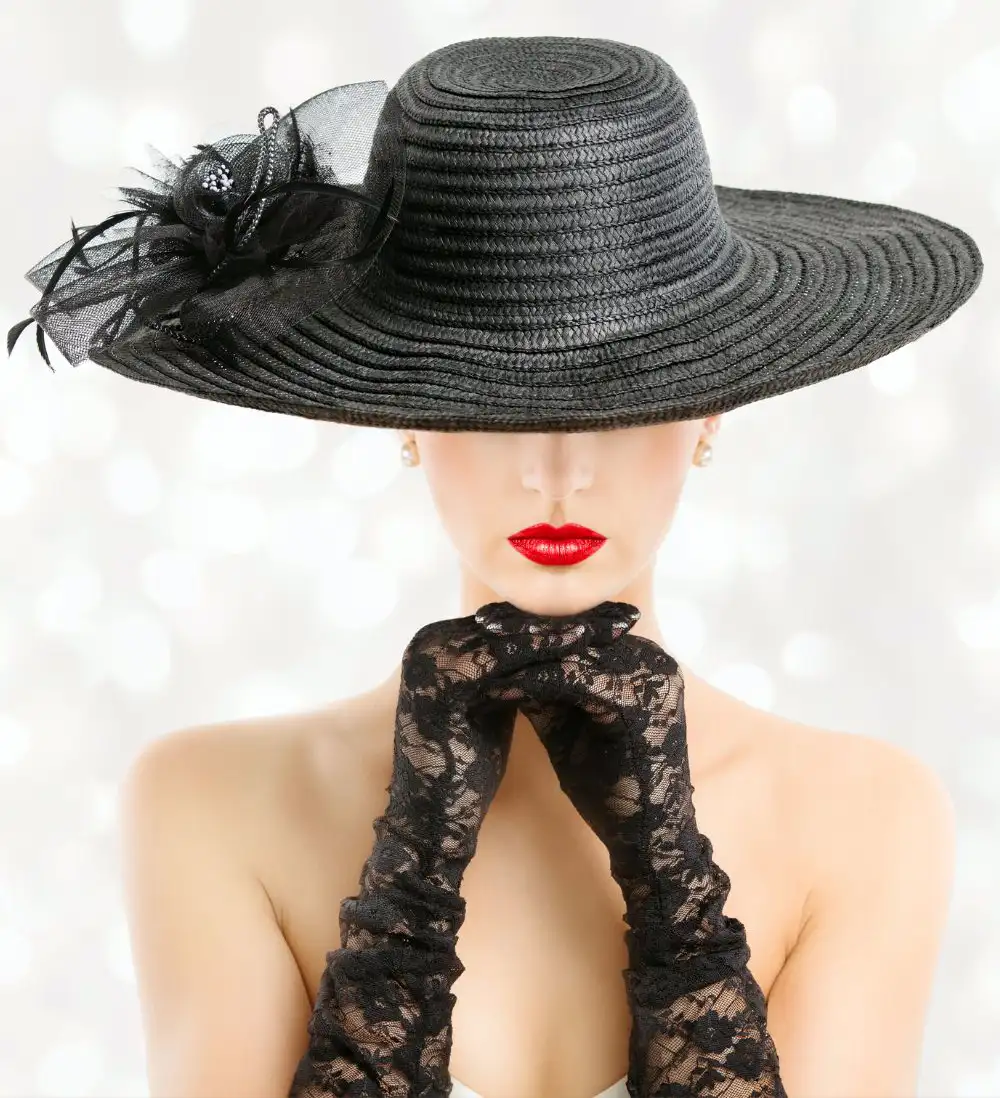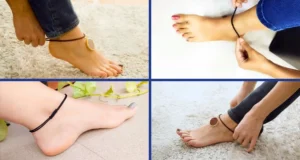Once an essential accessory for proper women’s fashion, gloves have slowly fallen out of favor. For ladies in previous generations, wearing gloves was seen as proper etiquette, but evolving trends have made them less commonplace. What happened to make this formerly indispensable accessory fade from prominence?
Changing fashion trends played a major role. The cultural revolution of the 1960s embraced more casual styles, seeing traditional accessories like gloves as outdated. Gloves were deemed too stuffy and restrictive for the informal workplace and a new lifestyle focused on comfort and convenience.
While gloves are less common today, they can still make an impact when worn. A pair of well-chosen gloves can elegantly complete an outfit for celebrations, parties, and formal occasions.
Gloves also protect hands from cold, dirt, and germs, showing their functionality remains relevant. Though fashion trends have made them less of a necessity, gloves can make a powerful statement when worn with style and panache.
Why did ladies stop wearing gloves?
Changing fashion trends
The main reason why ladies stopped wearing gloves regularly in the 1960s was due to changing fashion trends during that era. Gloves became seen as outdated and out of touch with the new casual and androgynous styles that were becoming popular then. Women started embracing more relaxed styles that reflected the evolving social landscape of that decade.
Gloves had long been associated with formality, femininity, and old-fashioned dressing. The trends of the 1960s challenged these traditional norms. Women wanted to avoid being seen as delicate creatures that always needed gloves to protect their refined hands.
The rise of the feminist movement furthered this desire for change as women no longer wanted to represent subservient roles through their fashion choices.
Disposable gloves also became available during this period, making gloves more convenient and less necessary. With disposable gloves, women no longer need to wear and care for pairs of reusable gloves. As formal occasions declined in frequency, so did the need for gloves that were traditionally seen as appropriate for those events.
In short, changing fashion preferences, the women’s liberation movement, convenience, and practicality all contributed to the decline in the popularity of gloves among ladies during the 1960s. While gloves are still worn today for various purposes, they are no longer seen as an essential part of a woman’s wardrobe during that era due to these factors.

The feminist movement
Another reason ladies stopped wearing gloves regularly in the 1960s was the rise of the feminist movement during that era. The feminist movement sought to challenge traditional gender roles and expectations of women. Gloves were seen as a symbol of female subservience and propriety that ladies had to wear to be seen as respectable.
The feminist movement of the 1960s argued that women should not have to wear gloves to be treated equally.
Gloves were rejected as a means of asserting independence and breaking away from traditional feminine stereotypes of women being delicate creatures that needed protection. Women no longer desired to present themselves as submissive by wearing gloves.
Ladies felt they should not have to wear gloves to conform to societal expectations of delicacy and refinement. The feminist movement made women realize they could protect their hands more practically like using hand cream instead of restrictive gloves. Women wanted to be seen based on their abilities rather than what they wore on their hands.
So ladies did away with gloves as a symbol of female subservience and a sign of social status. Gloves were viewed as old-fashioned and incompatible with the values of women’s liberation. The decline in glove-wearing reflected women’s changing social roles and attitudes during that time.
In summary, the rise of the feminist movement and women’s liberation in the 1960s challenged the notion that ladies needed to wear gloves. Gloves were rejected as a symbol of traditional femininity and conformity. Women embraced more practical ways to care for their hands that aligned with their newfound independence and freedom of choice.
Invention of disposable gloves
The invention of disposable gloves greatly contributed to the decline in the popularity of reusable gloves, including those worn by women, in the 1960s. Disposable gloves offered enhanced affordability, convenience, and hygiene compared to traditional reusable gloves, which were typically made of leather or fabric.
The introduction of disposable gloves revolutionized the glove industry. They were readily available at affordable prices, making them a practical and economical choice for various purposes.
Disposable gloves could be used once and then thrown away, eliminating the need to wash and maintain reusable gloves.
Compared to reusable gloves, disposable gloves were seen as more hygienic since they could be discarded after each use, which helped prevent the spread of germs.
Disposable gloves were embraced for medical, food, and cleaning purposes where hygiene was important. Using disposable gloves for such tasks made traditional reusable gloves less necessary.
Women no longer needed to wear and care for pairs of reusable gloves as disposable options became mainstream. Disposable gloves offered a hassle-free alternative for tasks where gloves were previously worn.
The convenience and practicality of disposable gloves contributed greatly to the decline in demand for reusable gloves.
In summary, disposable gloves’ invention and rising popularity in the 1960s revolutionized the glove industry by providing an affordable, convenient, and hygienic option. This disrupted the demand for traditional reusable gloves, including those worn by women, leading to their decline in popularity. Disposable gloves became the new normal for various purposes requiring reusable gloves.
Rise of the informal workplace
The rise of the informal workplace greatly contributed to the decline in the popularity of gloves among women in the 1960s. In the past, gloves were seen as part of formal business attire and were commonly worn in professional settings. However, the need for gloves diminishes as workplaces become more relaxed and casual.
Gloves were often associated with formal attire and traditional business dress codes. But as professional environments embraced more practical and comfortable clothing, wearing gloves in the workplace became less necessary. Gloves were deemed too stuffy and restrictive for the evolving modern workplace.
The shift toward casual dress in offices allowed women to wear more practical and comfortable clothing that did not require gloves. Cotton and polyester materials became popular, making glove-wearing less comfortable for all-day wear. Ladies preferred the freedom and convenience of glove-less hands while working.
So as traditional business wear gave way to more relaxed options, gloves lost their status as a professional essential. The perception that gloves were only appropriate for formal occasions further reduced their usage.
In summary, the rise of the informal workplace in the 1960s greatly contributed to the decline in the popularity of gloves among women. Ladies embraced the practicality, comfort, and freedom of glove-less hands as part of their modernizing workplace attire. Gloves came to be seen as outdated and restrictive for the changing needs of working women.

Decline of formal occasions
The decline of formal occasions played an important role in the reduced popularity of gloves among women in the 1960s. In the past, gloves were commonly worn to formal events like weddings, balls, and cocktail parties where traditional formal attire was expected.
However, as formal gatherings became less frequent and dress codes relaxed, the need for gloves on such occasions diminished.
Gloves are typically seen as part of formal dress and are less commonly worn with casual or informal clothing. So as formal occasions declined, women had fewer opportunities to incorporate gloves into their outfits. This resulted in less glove-wearing among ladies overall.
Traditionally, gloves were deemed essential for any formal gathering where women wanted to appear well-dressed and stylish. However, over time, wearing gloves to social events became optional rather than mandatory.
Many women opted to forego gloves for increased comfort and freedom of movement, further contributing to their decline in use.
In summary, the decreasing frequency of formal occasions and the relaxation of traditional dress codes meant that gloves were no longer required as they once were. Gloves came to be seen as less essential and more of an optional formality.
Many women embraced the option to go glove-less for casual events, indicating changing preferences for comfort over strict adherence to traditional formality. Therefore, the decline in formal occasions significantly reduced opportunities for women to incorporate gloves into their wardrobes, playing a role in their overall decline in popularity.
Rise of the health and hygiene movement
The rise of the health and hygiene movement in the 1960s contributed significantly to the decline in the popularity of gloves among women. During that time, there was a growing awareness of the importance of proper hand hygiene to prevent spreading infections.
As people became more conscious about maintaining clean hands, the reliance on gloves as a protective barrier decreased. Studies showed that regular handwashing with soap and water was more effective for removing and killing germs than just wearing gloves.
The realization that proper hand hygiene through regular washing was a more effective way to maintain hygiene led to a reduction in the usage of gloves. Gloves prevent germs from contacting the hands but do not actually remove or kill germs as handwashing does.
The emphasis on effective hand hygiene contributed to a shift away from using gloves as a necessity. Women began opting for improved hand hygiene through frequent handwashing instead of relying on gloves to protect their hands all the time.
In summary, the rise of the health and hygiene movement in the 1960s decreased women’s dependency on gloves as a protective barrier. Improved knowledge about effective handwashing practices and understanding its advantages over glove usage contributed to the declining popularity of gloves among ladies at that time. They embraced more practical and hygienic alternatives to maintaining clean hands, allowing gloves to fade from the necessity of daily wardrobes.
Practicality
The practicality of gloves, or lack thereof, played a significant role in their decline in popularity among women in the 1960s. Gloves, by their very nature, restrict dexterity and movement, which can make them inconvenient when performing tasks that require hand use.
As fashion trends shifted towards more functional clothing choices that prioritized comfort and ease of movement, the popularity of gloves declined significantly.
Women embraced styles focused on practicality, and gloves were seen as impractical accessories that hindered tasks involving fine motor skills like typing, sewing, and playing instruments.
As women participated more in the workforce and other activities requiring manual dexterity, they became less inclined to wear gloves that restricted their range of hand movement.
In addition to posing practical challenges, gloves can make hands feel sweaty, clammy, and uncomfortable when worn for long periods.
So as women’s priorities shifted towards comfort, convenience, and functionality, their preference for gloves diminished greatly. Gloves came to be seen as outdated, stuffy accessories incompatible with women’s evolving lifestyle needs that demanded free hand movement.
In summary, the practicality of gloves, or lack thereof, was a major contributing factor in their decline in popularity among ladies in the 1960s. Gloves were deemed too restrictive and uncomfortable for the era’s comfort, convenience, and functionality priorities.
Women embraced more practical alternatives for protecting and caring for their hands that aligned better with their changing roles and activities. Thus, gloves faded from necessity as fashion shifted to accommodate women’s evolving needs and preferences.
Social status
The declining importance of social status played an important role in the reduced popularity of gloves among women in the 1960s. Historically, gloves were used to signify social status, as only women from higher social classes could afford to wear them. Ladies from working-class backgrounds sometimes wore gloves to cover their rough hands and suggest a higher status.
However, as societal class distinctions became less significant over time, the need to wear gloves to display social status diminished. People were no longer as concerned with displaying their wealth and position through their clothing and accessories.
The declining prominence of class differences in society further contributed to a decrease in the popularity of gloves as a symbol of status. As people became more accepting of those from various backgrounds, the desire to wear gloves to distinguish themselves from lower social classes faded.
In summary, as class distinctions and status signifiers lost relevance in the 1960s, gloves were no longer needed as they once were to convey social standing. While gloves were previously seen as demonstrating refinement and sophistication, they came to be viewed simply as an optional fashion choice.
Many women opted not to wear gloves based on changing perceptions about the diminishing importance of social class. The overall decline in the value placed on social status reduced the necessity and desirability of gloves among women.

Summary
The decline in the popularity of gloves among women in the 1960s can be attributed to changing fashion trends, the rise of the feminist movement, the invention of disposable gloves, the rise of the informal workplace, the decline of formal occasions, the health and hygiene movement, and practicality concerns.
As women embraced more casual and practical clothing choices, gloves became less necessary for everyday use. Moreover, the feminist movement challenged the traditional roles associated with glove-wearing, advocating for independence and equality.
Introducing disposable gloves provided a more affordable and hygienic option, making traditional gloves less relevant. The rise of the informal workplace further diminished the need for formal accessories like gloves.
With the decline of formal occasions, the occasions to wear gloves decreased, and their significance dwindled. The emphasis on hand hygiene and understanding effective handwashing also reduced reliance on gloves for protection. Lastly, gloves’ lack of practicality hindered tasks requiring hand movement and comfort, further contributing to their diminished popularity.
Overall, the changing social and cultural landscape in the 1960s led to a decline in the necessity and desirability of gloves among women.
FAQ
Were gloves worn in 1930s?
Yes, gloves were worn in the 1930s. Many women wore gloves in the 1930s, and it was customary to wear short gloves (no longer than the wrist) during the day. Gloves’ popularity decreased in the 1930s but were still a common fashion accessory.
Are gloves in fashion 2023?
Yes, gloves are fashionable in 2023. Opera gloves, long gloves, and bridal gloves are some of the glove styles that have gained popularity in 2023. Gloves are being worn as a fashion statement and an outfit accessory. Specialized gloves, such as touchscreen and heated gloves, have also gained popularity for their practicality.
Did people wear rings over gloves?
It is not appropriate to wear rings over gloves. Rings worn over gloves are considered vulgar while wearing them under gloves is acceptable but may look lumpy. Bracelets were usually worn over gloves, and rings were usually just jewelry to show off the family rubies. However, some people wear their engagement and wedding rings under gloves. Overall, it is not common or recommended to wear rings over gloves.
What decade were gloves popular?
Gloves were popular during different decades in history. However, the specific decade when gloves were most popular may depend on the type of gloves referred to. For example, evening gloves like opera gloves were popular in the 1940s through the early 1960s. Gloves with lavish designs were popular during earlier decades. Gloves have been worn as a fashion accessory for centuries and have evolved with changing styles and trends.
Did Native Americans have gloves?
Yes, Native Americans did have gloves. They made gloves and mittens from materials such as buckskin and decorated them with designs such as quillwork and beadwork. Additionally, gloves were sometimes used as part of a traditional outfit for ceremonial purposes.



